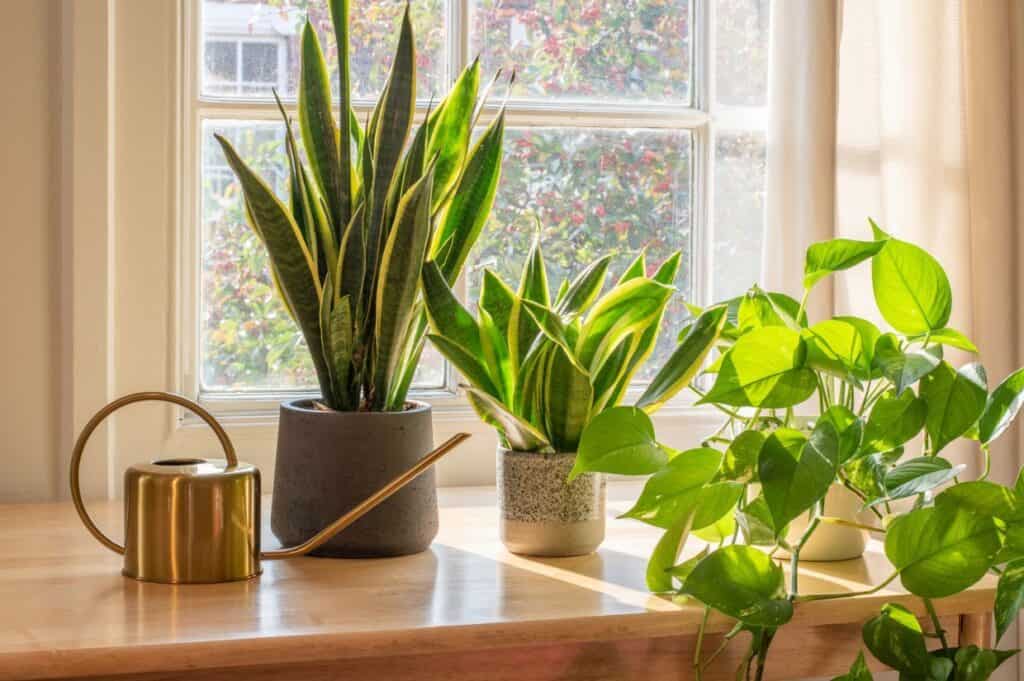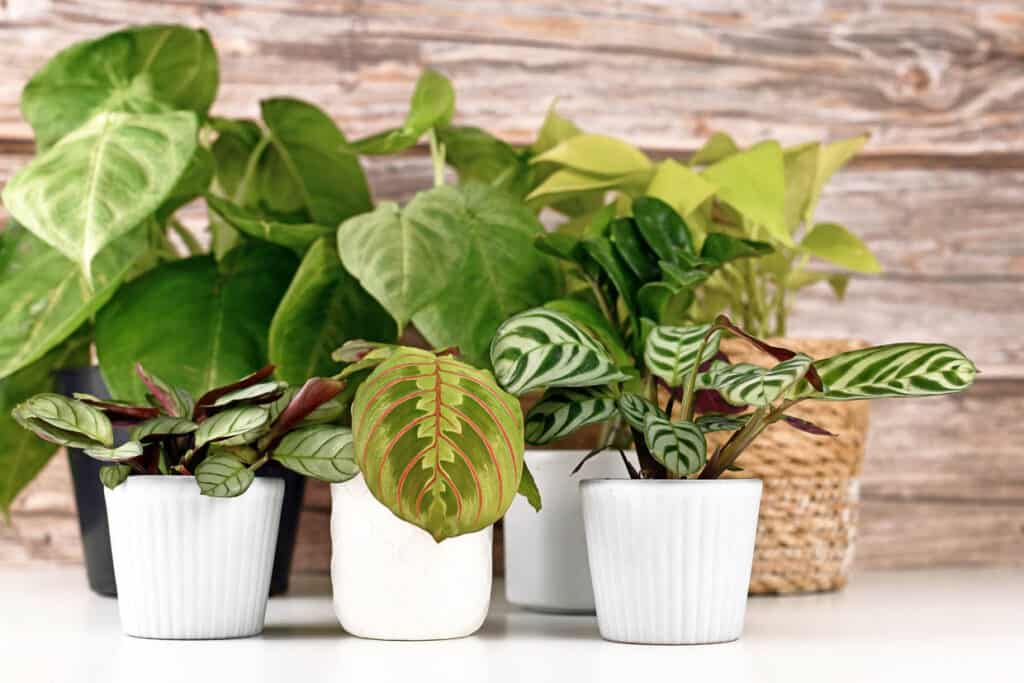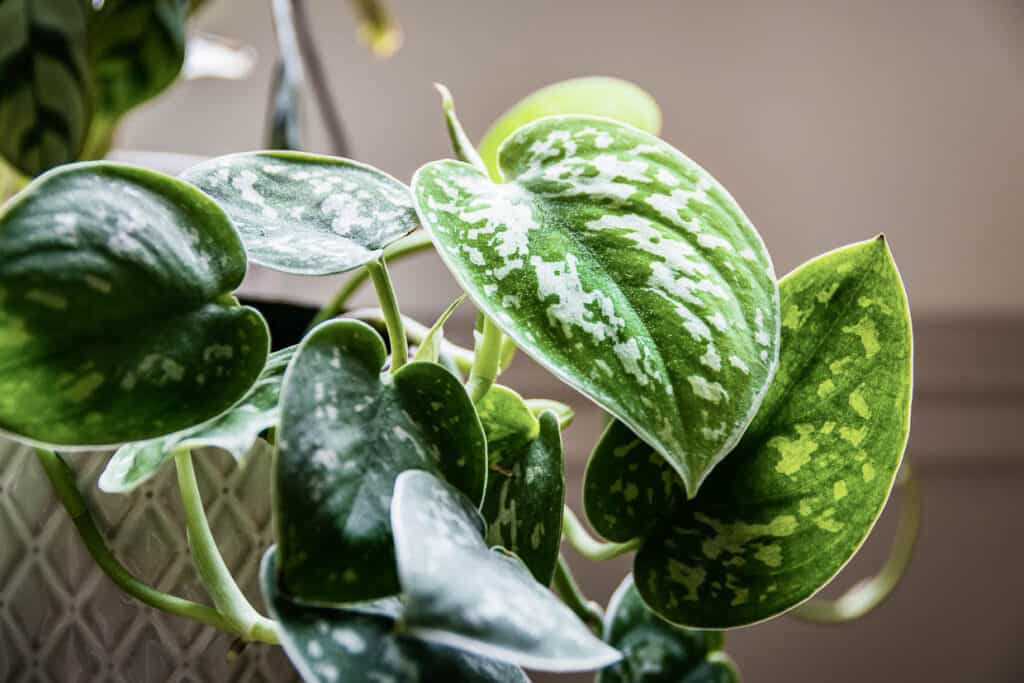Air-filtering plants are a simple way to boost the air quality in your home. They work hard to remove harmful toxins and pollutants from the air you breathe. Adding a few of these plants to your living spaces can create a healthier environment for yourself and your family.

Incorporating air-filtering plants into your home is an easy and natural solution that can make a big difference in your daily life. But these plants do more than just purify the air. There’s something about having a bit of nature within your space that just makes you feel good.
It’s like bringing a little piece of the outdoors inside. Not only will houseplants help you breathe easier, but you’ll also have a more lively and inviting space to enjoy.
Top 10 air-filtering plants
These indoor plants excel at purifying the air in your home. They are natural air filters that can remove toxins and improve air quality while adding beauty to your living spaces.
Spider plant
Spider plants are easy to care for and highly effective air purifiers. They thrive in bright, indirect light and prefer well-draining soil. These plants produce hanging offshoots, perfect for hanging baskets or elevated planters.
Snake plant
Snake plants are hardy and low maintenance. They tolerate low light conditions and infrequent watering. Their tall, upright leaves add a modern touch to any room and they’re ideal for bedrooms, as they release oxygen at night.
Peace lily
Peace lilies are powerful air purifiers that thrive in low to moderate light. They also produce elegant white flowers, making them attractive additions to your home. However, they are not a good choice for homes with pets, as they can be toxic if eaten.
Boston fern
Boston ferns are excellent at removing pollutants from the air. Their lush, feathery fronds add a tropical feel to your space. They enjoy high humidity, making them perfect for bathrooms or kitchens.

Aloe vera
Aloe vera plants are not only known for purifying the air but also for their striking appearance. These succulent plants thrive in bright, sunny locations like window sills. Their thick, fleshy leaves and easy-to-care-for nature are an excellent addition to your home.
Bamboo palm
Bamboo palms are efficient at removing toxins from indoor air. Their impressive height makes them fantastic focal points in large rooms. Bamboo palms’ lush, delicate leaves bring a fresh feel to your interior design.
Rubber tree
Rubber plants are excellent air purifiers that effectively filter various pollutants from indoor spaces. Their large, glossy leaves make a striking addition to any room. As they have the potential to grow quite tall, it’s essential to provide support when needed.
English ivy
English ivy is an air-purifying plant that thrives in bright, indirect light. It is perfect for large rooms or areas with limited air circulation. However, it can be toxic if ingested, so it may not suit households with pets or young children.
Weeping fig
The weeping fig is a common houseplant that excels at purifying indoor air. Its dense, glossy foliage adds a touch of elegance to any room and also has a lot of surface area for absorbing airborne toxins. Weeping figs thrive in bright, indirect light and benefit from regular misting.
Pothos
Pothos, also known as Devil’s Ivy, is a low-maintenance and beginner-friendly vine. It can adapt to various growing conditions and even flourish in low-light settings. However, pothos can be toxic if ingested, so it may not be the best choice for homes with pets or young children.
“I have snake plants scattered about our house. They are low maintenance and pretty and help remove indoor air pollutants. Just remember to keep any of your four-legged friends away from them as snake plants can be toxic to dogs and cats if they eat the leaves.”
— Sage Scott, Sage Alpha Gal
How plants clean indoor air
A study by the United States Environmental Protection Agency shows that breathing clean air improves your overall health by reducing respiratory issues, allergies and headaches. Clean air also boosts your energy levels and helps you sleep better at night.
Plants absorb carbon dioxide and release fresh oxygen through photosynthesis. This process improves air quality and increases oxygen levels in homes and offices.
Plants filter air through their leaves and roots. Tiny pores called stomata absorb air pollutants and trap them in plant tissue. The plant’s metabolism then breaks down these toxins.
Plants also increase humidity levels. They also catch dust on their leaves, so there’s less of it floating around. According to a NASA study, adding plants to your space creates a natural, eco-friendly air purification system.

Challenges and considerations
Air-filtering plants are great, but they’re not perfect. Before adding them to your home, keep a few things in mind.
First, you’ll need quite a few plants to notice a difference in air quality. Aim for at least one medium-sized plant for every 100 square feet of space.
Second, plants aren’t as fast as machines at cleaning the air. They do the job slowly, so don’t expect instant results.
Third, some plants can cause allergies or breathing problems for sensitive people. If you or your family have allergies, be careful about which plants you choose. Stick with low-allergen options like spider plants, snake plants or peace lilies.
Lastly, overwatering and poor drainage can lead to mold growth, which triggers allergies. So be sure to water just the right amount and use pots with good drainage. Despite these limitations, air-filtering plants are an excellent, natural way to improve your indoor air quality.
Summing up
Air-filtering plants are a natural and fantastic way to freshen up the air in your home or office. With these 10 options, you can find the perfect green companions to suit your style and needs.
Just remember to give them the right amount of light and care to keep them thriving and purifying the air. Combine these natural wonders with good ventilation and regular cleaning, and you’ll be on your way to creating a healthier, more vibrant living space.
Anne Jolly is the creator of the food blog Upstate Ramblings. She loves to cook with gadgets like an air fryer, sous vide or pressure cooker.